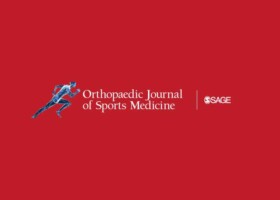
Authors:
Ganokroj P, Dey Hazra ME, Dey Harza R, Brady AW, Brown JR, Rupp MC, Garcia AR, Whalen RJ, Millett PJ, Provencher MT
Abstract:
Background:
In the Latarjet procedure, the ideal placement of the coracoid graft in the medial-lateral position is flush with the anterior glenoid rim. However, the ideal position of the graft in the superior-inferior position (sagittal plane) for restoring glenohumeral joint stability is still controversial.
Purpose:
To compare coracoid graft clockface positions between the traditional 3 to 5 o’clock and a more inferior (for the right shoulder) 4 to 6 o’clock with regard to glenohumeral joint stability in the Latarjet procedure.
Study design:
Controlled laboratory study.
Methods:
A total of 10 fresh-frozen cadaveric shoulders were tested in a dynamic, custom-built robotic shoulder model. Each shoulder was loaded with a 50-N compressive load while an 80-N force was applied in the anteroinferior axes at 90° of abduction and 60° of shoulder external rotation. Four conditions were tested: (1) intact, (2) 6-mm glenoid bone loss (GBL), (3) Latarjet procedure fixed at 3- to 5-o’clock position, and (4) Latarjet procedure fixed at 4- to 6-o’clock position. The stability ratio (SR) and degree of lateral humeral displacement (LHD) were recorded. A 1-factor random-intercepts linear mixed-effects model and Tukey method were used for statistical analysis.
Results:
Compared with the intact state (1.77 ± 0.11), the SR was significantly lower after creating a 6-mm GBL (1.14 ± 0.61, P = .009), with no significant difference in SR after Latarjet 3 to 5 o’clock (1.51 ± 0.70, P = .51) or 4 to 6 o’clock (1.55 ± 0.68, P = .52). Compared with the intact state (6.48 ± 2.24 mm), LHD decreased significantly after GBL (3.16 ± 1.56 mm, P < .001) and Latarjet 4 to 6 o’clock (5.48 ± 3.39 mm, P < .001). Displacement decreased significantly after Latarjet 3 to 5 o’clock (4.78 ± 2.50 mm, P = .04) compared with the intact state but not after Latarjet 4 to 6 o’clock (P = .71).
Conclusion:
The Latarjet procedure in both coracoid graft positions (3-5 and 4-6 o’clock) restored the SR to the values measured in the intact state. A more inferior graft position (fixed at 4-6 o’clock) may improve shoulder biomechanics, but additional work is needed to establish clinical relevance.
Clinical relevance:
An inferior coracoid graft fixation, the 4- to 6-o’clock position, may benefit in restoring normal shoulder biomechanics after the Latarjet procedure.
For the complete study: Biomechanical Evaluation of the Two Different Levels of Coracoid Graft Positions in the Latarjet Procedure for Anterior Shoulder Instability

